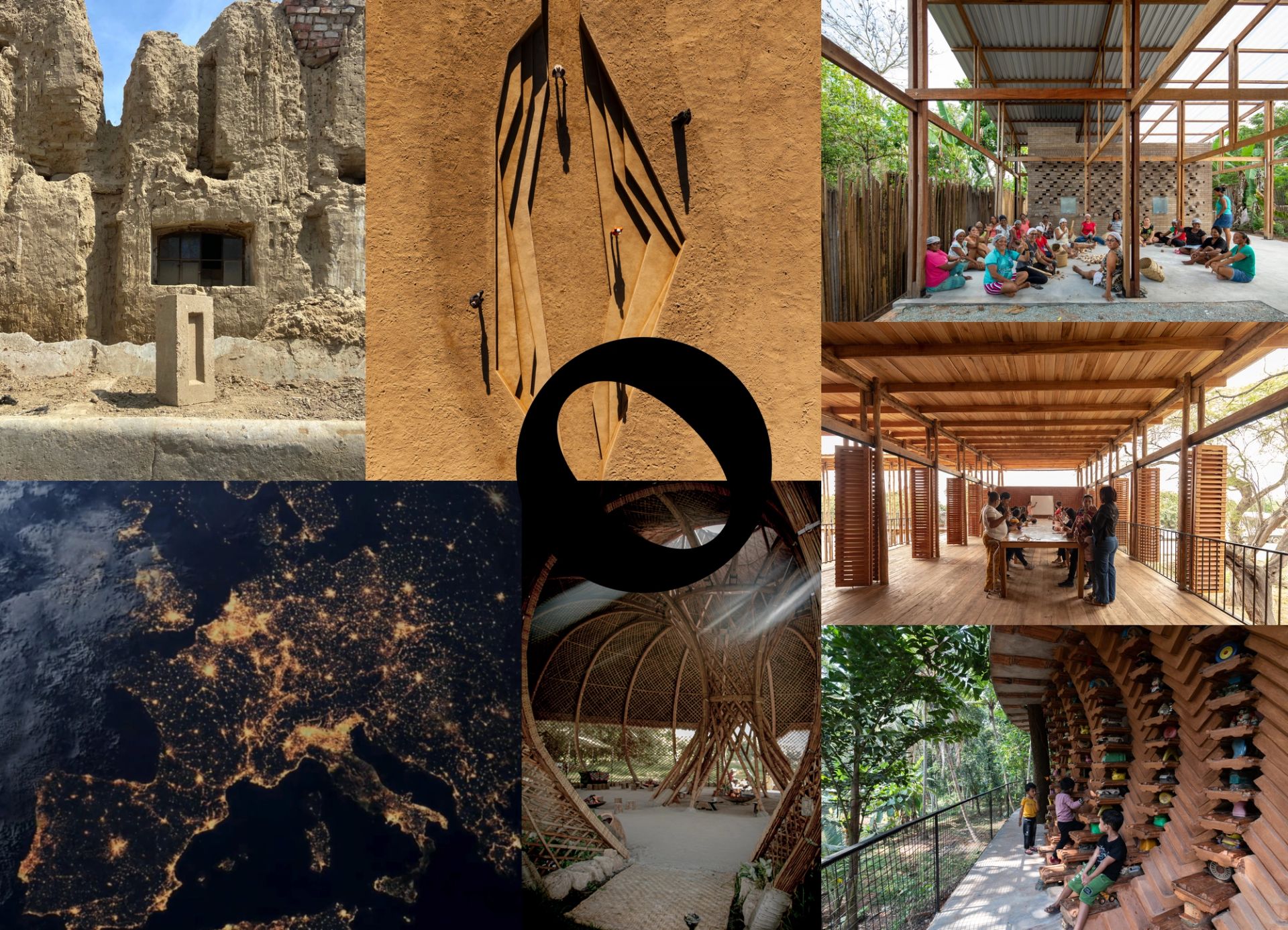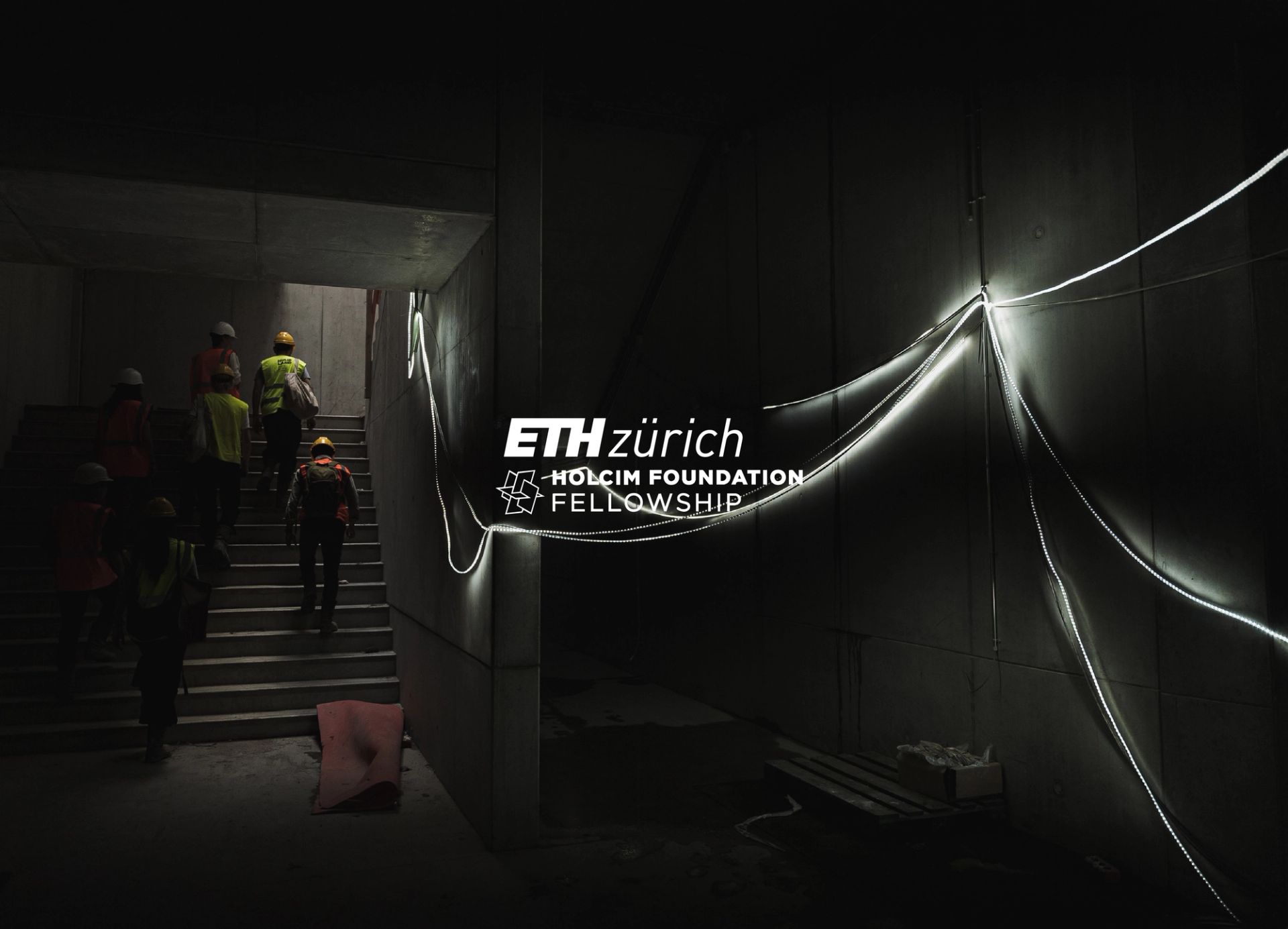When looking at a building it is difficult to make a distinction between the materials used and the potential waste they represent as the building finishes its lifespan. A building is no more than a formless accumulation of materials, piles of stuff that re-emerge when the given form is eventually demolished, becoming just weight in the realm of trash. Chilean curators Pamela Prado and Pedro Ignacio Alonso were called by the 6th Lisbon Architecture Triennale to dig into the delicate topic of cycles and waste with their exhibition “Cycles” at Garagem Sul – CCB in Lisbon, were they presented a shortlist of case studies that represent virtuous alternatives to mainstream material construction in architecture. Within their exhibition they explore concepts such as “city mining”, the finding and reuse of architectural leftovers, and the importance of material classification to reduce waste in construction practices. To better express this idea they introduced a short story by Ilya Kabakov written in 1977, titled The Man who Never Threw Anything Away, praising the aesthetics of the warehouse, where the architect is fully aware of the complete cycles that involve his decisions, even the smallest, rejecting an aesthetic of waste. Here their thoughts shared with KoozArch.
KOOZ According to the latest IPCC report the buildings and construction sector accounted for 36% of final energy use and 39% of energy and process-related carbon dioxide (CO2) emissions, 11% of which resulted from manufacturing building materials and products such as steel, cement and glass revealing a systematic problem in the way we build our environments. The exhibition explores the designing of new cycles for the distribution of architectural matter by acknowledging the amount of energy, water, human labour and carbon footprint originally embedded in the materials’ production. Through what means and in what ways can we effectively, empirically explore the footprint of our built environment and consequently, build better?
PEDRO IGNACIO ALONSO There is not one answer and rather, as curators, we were interested in presenting a selection of projects and approaches which explore footprint and in particular a material’s footprint in diverse ways. We were focused on bringing to the forefront practices who really explore the potential of not throwing anything away but who are rather continually engaged in urban mining processes. An interesting case study is that of BC Architects & Studies who have recently used the earth excavated for the creation of foundations within a building site as architectural material. Of course, there is a footprint inherent to the energy consumed withing the process but in the larger scheme of things, one could say that it is offsetted.
With our practice we push for the safeguarding of our built artefacts not for historical preservation purposes but rather because of the embedded CO2 and human labour embodied within it. We need to keep our architectures alive and advocate for notions of heritage which are associated to embodied energies.
An interesting case study is that of BC Architects & Studies who have recently used the earth excavated for the creation of foundations within a building site as architectural material.
KOOZ By drawing attention on the designing of cycles rather than buildings, the exhibition shifts the focus from built artefacts to the materials and the processes of declassification and reclassification that these undergo in turning from garbage and non-garbage. To what extent could we talk about a paradigm shift in the role and potential of the architect as one whose scope expands beyond the temporary artefacts but rather on the design of material systems through time, from the use of one architecture into the next?
PIA There is no such thing as building with waste as technically waste is waste, and a building material is not waste. This is a very subtle distinction which for us is important and that, in our view, begs us to reframe the circular approach as one that is involved with the act of not throwing anything away rather than building with waste and recycling. It is important that materials retain the definition of materials to meet certain standards and, thus, the exhibition is focused on cycles and not recycling. We are not interested in the recycling of materials that do not belong to the construction industry and are falling in the “aesthetics” of waste. Architecture is prone to express construction and if you are constructing with waste, then you must express waste to the point where one might fall victim of “waste expressionism”. The exhibition rejects the waste aesthetics and praises the aesthetics of the warehouse, a space where the architect who does not through anything away keeps working full cycle in and out of uses and buildings.
If we thus go back to the notion of standards and take a material from a building, this should already be appropriate as it was already part of a durable and fine structure. We focus on proper building materials that are stored instead of ending up as waste. They are then ready to be deployed in a new building. In line within this approach, the exhibition was obviously made from re-used materials and features materials and elements in and out of their re-use. This is also architecture.
There is no such thing as building with waste as technically waste is waste, and a building material is not waste. This is a very subtle distinction which for us is important and that, in our view, begs us to reframe the circular approach as one that is involved with the act of not throwing anything away rather than building with waste and recycling.
KOOZ What about technology, is technology helping in making these processes easier?
PIA It’s certainly all about technology although we like to reframe the discourse around techniques as we do not work with high tech but rather with and through the potential of the human and our hands.
The exhibition rejects the waste aesthetics and praises the aesthetics of the warehouse, a space where the architect who does not through anything away keeps working full cycle in and out of uses and buildings.
KOOZ The exhibition put fourth alternative cycles to the mainstream cycles. Is there a potential for a breach in the mainstream?
PIA It’s unlikely that we will stop building. Although we are interested in questioning how many buildings will be built that are unnecessary? How many buildings are empty? How many cultural buildings built during the great boom in Portugal, 20 years ago, are no longer used and are publicly accessible? The tallest building in Santiago de Chile is empty and has been empty for a decade. When building is a way of storing money and when you burn CO2 to produce cement as a form of speculation, well this becomes a complex problem. We will only break away from the mainstream when we realise how bad the situation has gotten.
With our practice and with this exhibition we are trying to portray the other side of the coin. We want to show that there is an alternative to the concrete, steel and glass to multinational real estate companies. As architects and curators, we feel the responsibility of embracing and showing that there is a possible relevant alternative which is characterised by smaller practices with a down to earth work ethic who are working collectively. Moreover, we trust in the power of education and universities as bridges to these alternatives. We trust that, as professors, we can motivate students and challenge them in pursuing an open mind and keep a conscious attitude towards change. To this end, within the show, we were extremely pleased to be able to juxtapose the work of established practitioners with that of university students.
Bio
Chilean curator of contemporary art, Pamela Prado graduated at the Universidad de Chile, holds a Master in Curatorship at Royal College of Art, London and has developed her curatorial and academic work between Chile, Brazil and the UK. She organised the seminar The New Archive: Documenting Latin American Art at the Royal College of Art, and co-founded Curating Contexts, a platform for researching and discussing visual arts in South America. She was the curator-in-residence at the Fórum Permanente and Ateliê Fidalga, in São Paulo, Brazil. She has curated and co-curated several exhibitions at the Royal College of Art, Centro Cultural São Paulo, and Groupe Intervention Vidéo, Montreal, among others. She has collaborated with the Exit Express magazine, in Spain, and she is also the editor of the book Alfredo Jaar: Los Ojos de Gutete Emerita.
Chilean architect, professor and curator, Pedro Ignacio Alonso teaches theory of architecture and design at the Universidad Católica de Chile, where he is Associate Professor, and at the Architectural Association. He was a Princeton-Mellon Fellow at Princeton University and resident architect at the Rockefeller Foundation Bellagio Center. Pedro has a history of producing exhibitions with Hugo Palmarola, and they received the Silver Lion for the Chilean Pavilion Monolith Controversies at the 2014 Venice Biennale. He also curated the exhibition Flying Panels: How Concrete Panels Changed the World, at the Swedish Center for Architecture and Design, and is the author of the books Deserta: Ecology and Industry in the Atacama Desert, Panel, Space Race Archaeologies, and Flying Panels.





